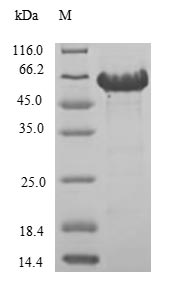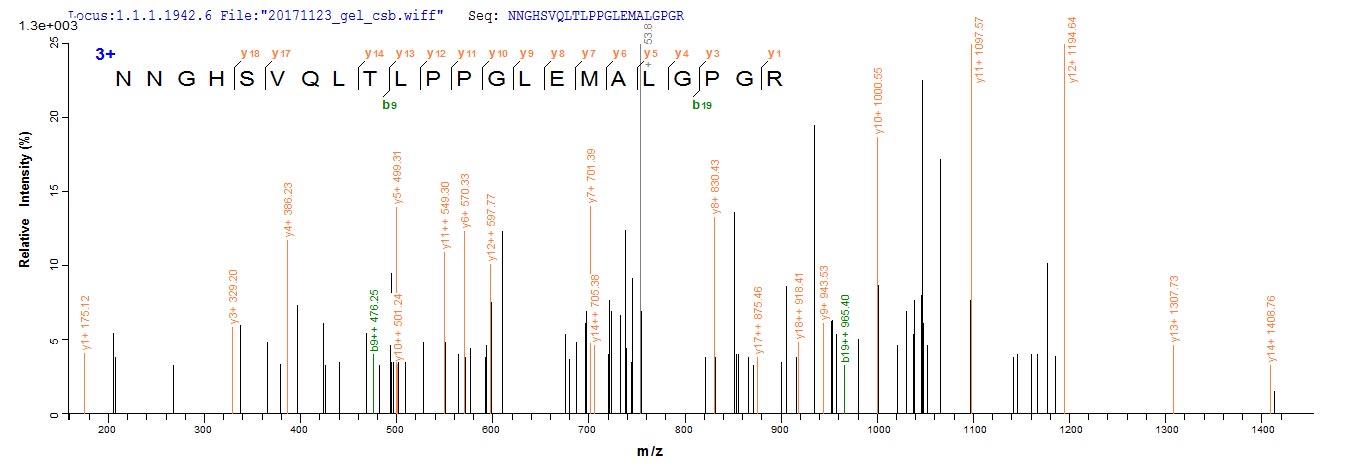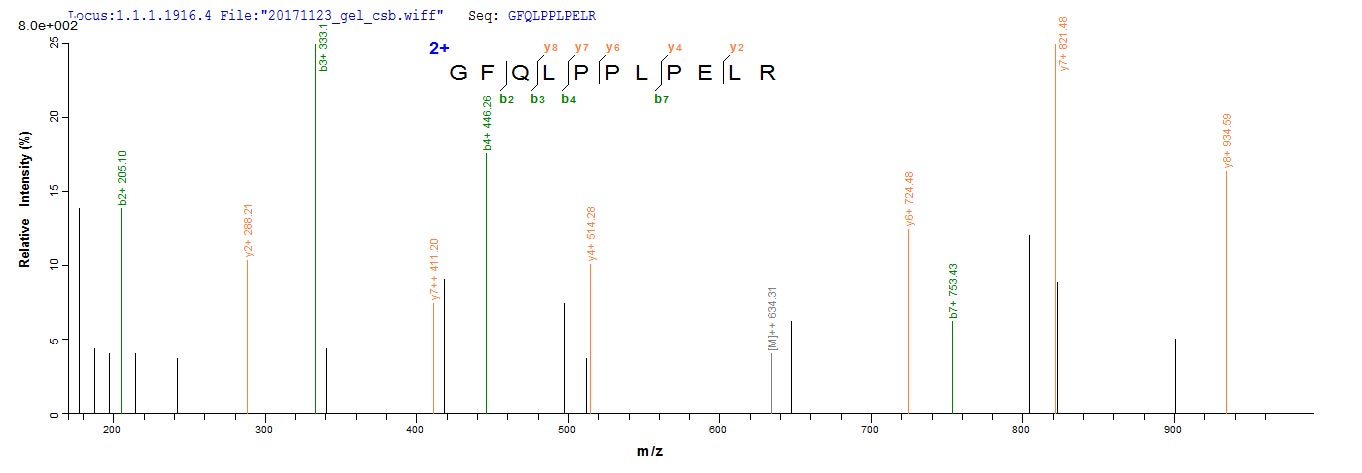The production of this Recombinant Human CA9 protein started with the CA9 gene synthesis. And then using recombinant DNA technology, the CA9 gene was inserted into an expression vector so that we could get the recombinant express plasmid of CA9. Transform the plasmid into the cells of E.coli, culture the cells and we could get the desired Recombinant Human CA9 protein. But the work was not completed, protein purification and a strict QC system were performed in the last step. The purity is 85%+ determined by SDS-PAGE.
CA9 (also called G250 or MN) is a gene providing an instruction of making a protein named carbonic anhydrase 9 (CA9) in human. The protein encoded by this gene has several alternative names, including carbonate dehydratase IX, carbonic anhydrase IX (CA-IX or CAIX), membrane antigen MN, P54/58N, RCC-associated antigen G250 and pMW1. CAP protein is a transmembrane dimeric metalloenzyme with an extracellular active site that facilitates acid secretion in the gastrointestinal tract. This protein is overexpressed in many types of cancer.








